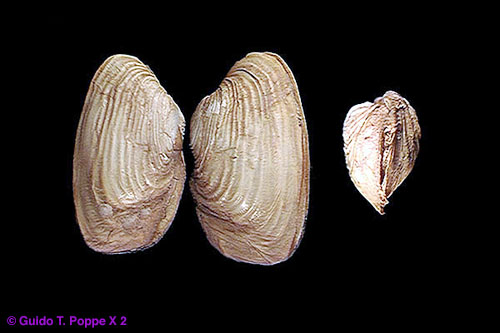MARINE ENVIRONMENTS
Faunal Associations and Salinity (cont'd)
![]()
Bivalve Shells and Salinity
 |
Since it was observed that the shell size of bivalves in the western basin of the Champlain Sea was variable, it was suggested that this variance could be used as an indicator of paleosalinity. It was observed that the shells of the species Hiatella arctica (shown at left) varied from 18.0 to 36.0 mm in length and from 10.1 to 20.0 mm in width. A study of the shell sizes of the Hiatella arctica were measured at two locations in the western basin of the Champlain Sea. At the first site, it was determined that the largest valves |
| were located within the upper part of the marine sequence, and the smallest valves were located in the lower part of the marine sequence. However at the second site, it was determined that the largest valves were located in the middle part of the marine sequence, and the smallest valves were located in both the lower and upper parts of the marine sequence. Since foraminiferal assemblages at both of these sites indicated that the salinity increased with depth, it could be concluded that there is indeed no correlation between the size of the Hiatella arctica shells and paleosalinity. | |
![]()